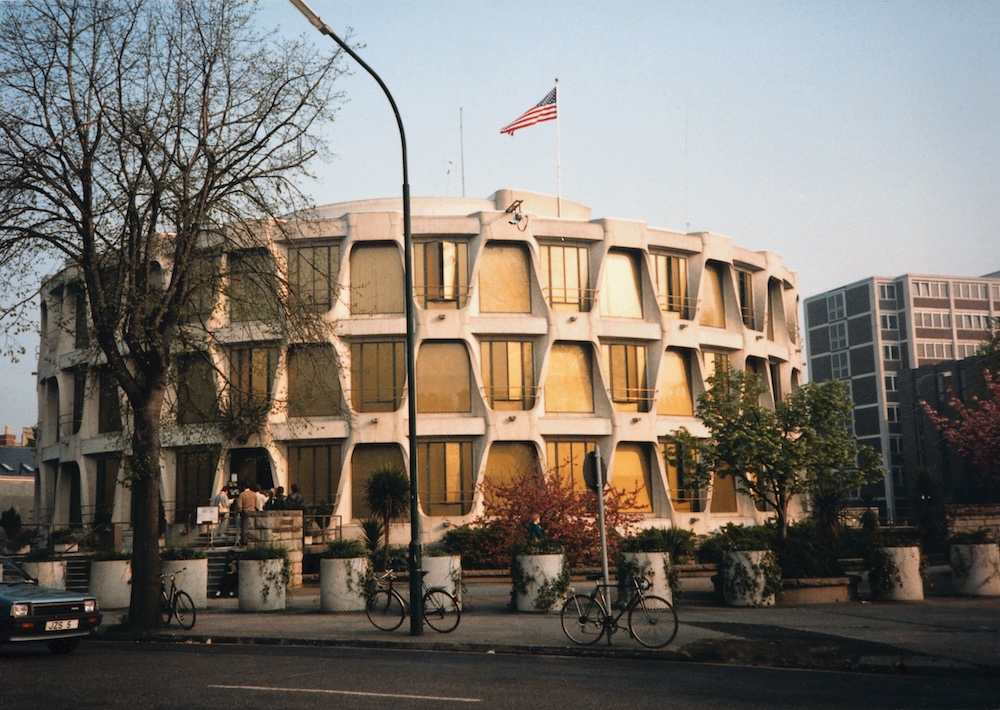‘New Canaan There & Then’ is sponsored by Brown Harris Stevens Realtors Bettina Hegel, Joanne Santulli, Dawn Sterner and Pam Stutz.
New Canaan resident Captain George J. Santry identified an important European technology to create the precast concrete that was used to build the Thule Airfield in Greenland, a top-secret U.S. Department of Defense Cold War project.
He then brought the material to the United States where it was used by notable New Canaan architects Philip Johnson for various projects and John Johansen for the U.S. Embassy in Dublin.
George Santry was director of the Joint Export Import Agency (JEIA) in the Office of the Military Government under the Marshall Plan following World War II. In his efforts to identify materials to rebuild Europe, he was introduced to the Schokbeton precasting system.
In the 1930s, the need for cheap building materials became a worldwide economic crisis and for concrete, cement was the most expensive component. A method to fabricate more dense concrete of the same strength using less cement and water was developed.
In 1932 the Schokbeton firm was created and rapidly expanded into a worldwide company. According to a DoCoMoMo publication by Jack Pyburn, “Schokbeton’s unique feature was a shock table, a steel frame table approximately the size of an over the road trailer that was motorized to raise and lower ¼” two hundred fifty times per minute. The sharp and intense shocking of a concrete containing mold produced by this dramatic action accomplished several qualitative objectives including exceptional strength, uniformity in placement and opportunity for creativity in design.”
When Santry met Philip Johnson in Europe, he told him of his plans to bring this new concrete system to the United States. Philip advised him to move to New Canaan because it was a hotbed of modernist architects. Santry took his advice and settled in New Canaan with his wife, Marcine, whom he had met when she worked for Gen. Dwight Eisenhower. One of the first buildings in the country to use Shockbeton concrete made in the United States was the ¾ architectural scale precast “folly” or Pavilion on the pond at The Glass House.
An entrepreneur, Santry continued to work in a number of businesses involved in architecture and construction concepts, airport lighting design, housing in South America, innovations in glass design at Corning glass, and clean-up of oil spills.
After retiring, George and Marcine founded the Black Swan Marina in Old Saybrook. Marcine joined the League of Women Voters, volunteered at the New Canaan Library and Waveny Care Center, and they attended St. Mark’s Church.
‘New Canaan There & Then’ is sponsored by Brown Harris Stevens Realtors Bettina Hegel, Joanne Santulli, Dawn Sterner and Pam Stutz.
